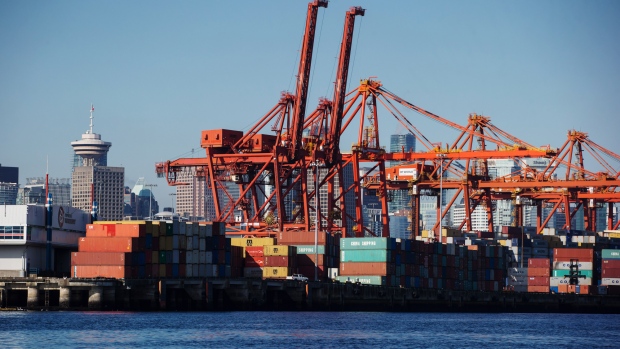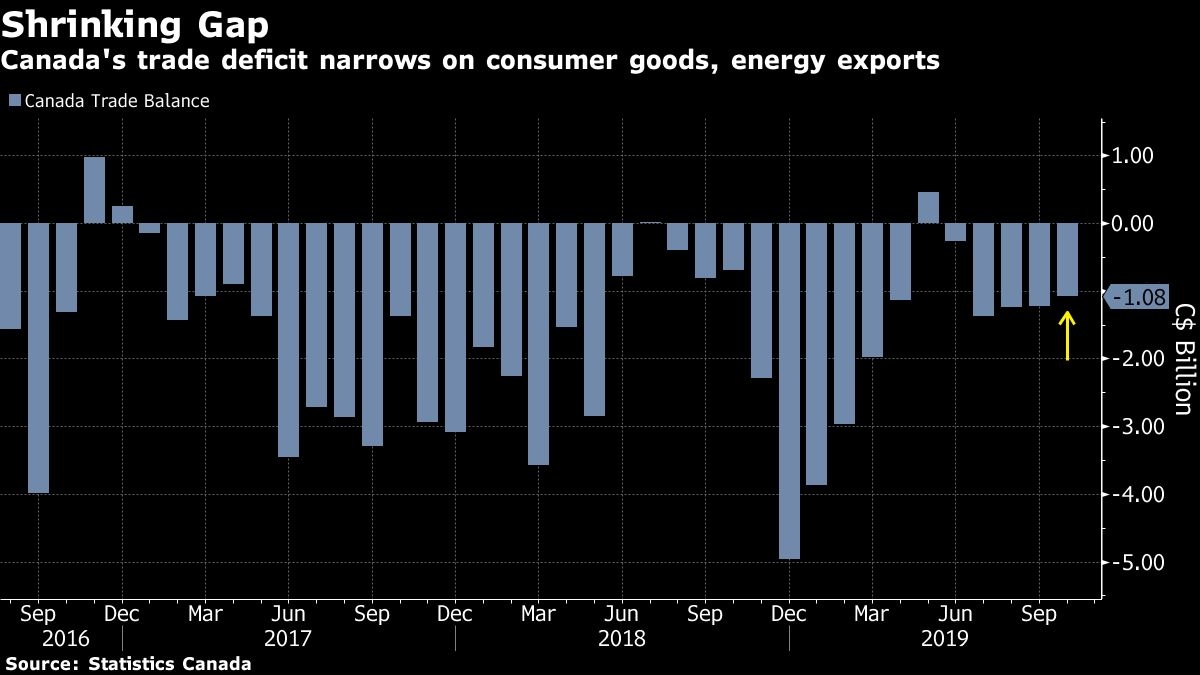Dec 5, 2019
Canada's trade balance improves; surplus with U.S. hits 10-year high
, Bloomberg News

Canada’s trade deficit unexpectedly narrowed as exports rose faster than imports, reinforcing the Bank of Canada’s view that the domestic economy remains resilient amid global tensions.
The nation posted a $1.1 billion trade gap in October, from a revised $1.2 billion in September, Statistics Canada said Thursday in Ottawa. The result beat economist expectations for a wider deficit of $1.5 billion.
Both imports and exports rose, in both volume and nominal terms. Canadian exports rebounded from a dip in September on a gain in shipments of consumer goods -- mainly fine art -- as well as energy and metal products. Partially offsetting the overall gain was a decline in agricultural products, mostly on lower shipments of soybeans to China. Motor vehicle exports were also lower, coinciding with a labor dispute at General Motors in the U.S.
Canada’s trade surplus with the U.S. widened to $5.5 billion, marking its strongest balance with its biggest trading partner since the 2008 financial crisis. Exports to China, meanwhile, plunged 19.3 per cent, the sharpest drop since 2012, amid a diplomatic feud stemming from Canada’s arrest of a top Huawei Technologies Co. executive on a U.S. extradition request that was followed by various import bans in Beijing.

The trade report comes on the heels of the Bank of Canada holding its benchmark interest rate steady for a ninth straight decision. Policy makers said Wednesday a recovery in global growth “appears to be intact,” even as trade tensions remain the biggest source of risk to the national economy.
September’s trade balance had initially been reported as a gap of $978 million. The statistics agency also revised all merchandise trade data back to 2016.
--With assistance from Erik Hertzberg.
